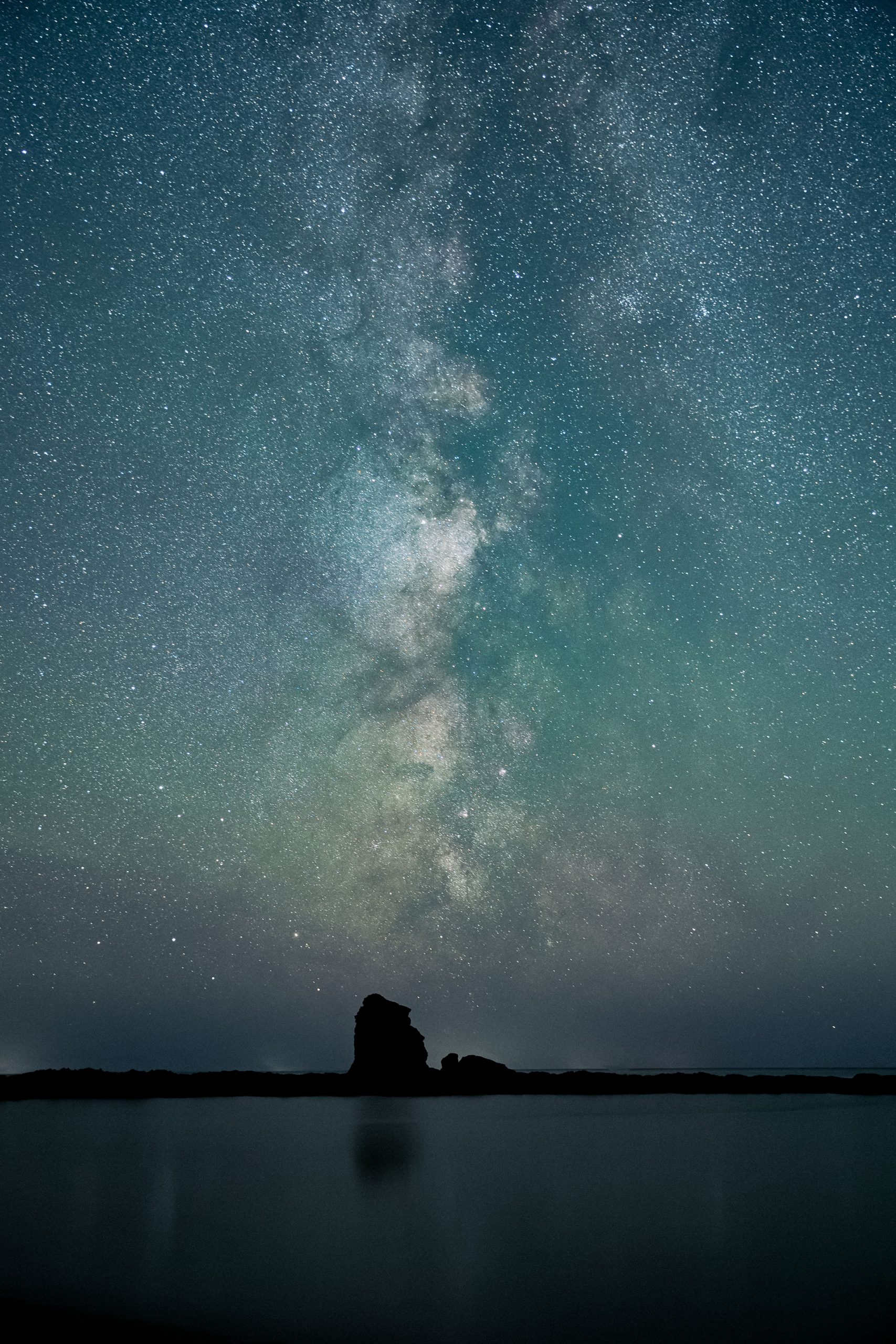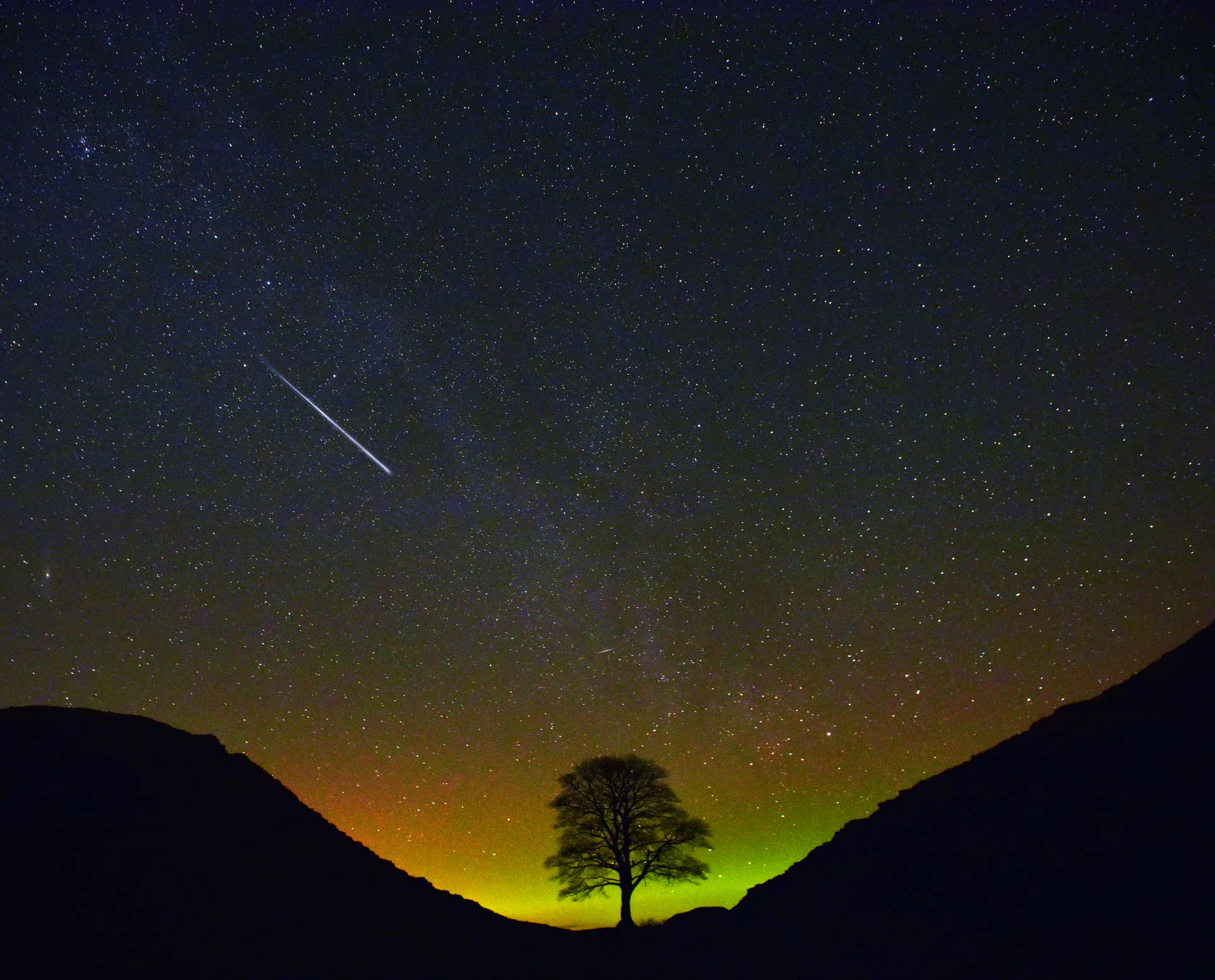Curious Questions: Why do stars twinkle?
'Twinkle twinkle little star' isn't just a nursery rhyme: it's an astronomical phenomenon. But what causes it? Martin Fone takes a look at why stars twinkle.


Since time immemorial we have been fascinated by the sight of stars twinkling in a clear night sky. The practised eye of an imaginative onlooker can spot groupings of stars that appear to form a picture, perhaps of a heroic human, a mythical creature, an animal, or an everyday object. Known as constellations and drawing their names from ancient Middle Eastern, Greek, and Roman cultures, forty-eight had been identified by the time the telescope had been invented. They were made up of the brightest stars most easily observed with the naked eye.
From the 16th century improvements in the magnification powers of the telescope coupled with a more structured interest in the world and universe in which we lived and the opening up of the southern hemisphere led to the discovery of another thirty-eight constellations, the so-called modern constellations. Featuring dimmer and more distant stars, they were given names such as the Giraffe, Telescope, and the Peacock.
In 1930 the International Astronomical Union produced a definitive list of eighty-eight constellations, combining the ancient, whose number they augmented by splitting Argo into three, with the modern. Drawing an imaginary line around the space each of the constellations occupied in a two-dimensional representation of the sky, and ensuring that each of the boundary edges met, they created a celestial sphere of eighty-eight segments around the Earth.
This provided a rather neat solution to the problem of developing naming conventions and location descriptors for the billions of stars that did not fit neatly into a constellation, no matter how imaginative the onlooker was. While late 19th century scientists conjured up an adjective, sparsile, to describe these solo stars, one, though, rather like a supernova, which was to shine brightly for a while before rapidly plummeting into obscurity, nowadays, every star, whether sparsile or part of a constellation, is named by its co-ordinates in the celestial sphere.

While stars in the same constellation are unlikely to have any connection with each other, all the stars we observe in the night sky share two characteristics; they are part of the Milky Way, and they twinkle, the latter phenomenon celebrated in one of the very few nursery rhymes I learnt on my mother’s metaphorical knee to have survived our heightened sensitivity to all things racist, imperialist, sectarian, and sexist, Twinkle, twinkle little star. It is a joyous evocation of a child’s wonderment at the shimmering stars they see brightening up the firmament. Perhaps the key to its survival is that by the standards of other nursery rhymes it is relatively modern.
The lyrics are drawn from a poem written by Jane Taylor, The Star, which she included in a collection of verses entitled Rhymes for the Nursery published with her sister, Ann, in 1806. The poem consists of five stanzas of rhyming couplets, but the nursery rhyme generally just uses the opening four lines. The tune to which the words are set is drawn from the melody of a French children’s song, Ah! Vous dirai-je, maman, first published in 1761 and used by Mozart as the basis for his piano composition, Twelve Variations (1781 or 2).
Atmospheric scintillation, the scientific term for the twinkling of a star, is, in truth, a form of optical illusion, the consequence of the interaction of its light with the Earth’s atmosphere. The Earth’s atmosphere, starting about 10,000 kilometres above its surface, is made of different layers and is affected by winds, varying temperatures, and different densities. Travelling from one medium to another, in this case from outer space through the Earth’s atmosphere, the light from a star bends many times, a phenomenon known as refraction. By the time we see it, the refractions have caused the rays to zigzag, some reaching us directly while others have bent either away from or towards us. So quickly does this happen that the star seems to twinkle.
Exquisite houses, the beauty of Nature, and how to get the most from your life, straight to your inbox.
The degree to which a star will twinkle will depend upon its place in our field of view and weather conditions. Stars near the horizon will appear to twinkle more than those directly overhead because the light has to travel through more of the atmosphere to reach us. Humid nights will also cause the air to be thicker, making stars appear to twinkle more.
Ironically, the conditions which induce the stars to appear to twinkle more and delight the casual observer are an anathema to the astronomer. Thick air which causes more atmospheric scintillation results in what they call ‘bad seeing’, while conditions where the air is thin, dry, and calm and interference is minimised result in ‘good seeing’. Astronomers tend to site their observatories in high, dry areas to remove as much as air as possible between the stars and the telescope to minimise interference.
Unlike a star, a planet does not twinkle. While the distances in space seem astronomical to the layperson, planets are significantly closer to the Earth than stars. The furthest planet in the Solar System, Neptune, orbits the Sun at an average distance of 2.794 billion miles and is approximately 4.2 light hours or 0.000475 light years away from Earth. In contrast, the nearest star to Earth, Proxima Centauri, is over four light years away.

This difference in relative distances affects the way we perceive light. A star appears as a single point of light which dims and brightens as it refracts on its way through the atmosphere. The light from a planet, though, appears to come from more than one point source and the dimming of some of its rays caused by refraction is counteracted by the brightening of others, giving the appearance of a steady, unblinking source of light.
Worryingly, Shakespeare’s night sky ‘painted with unnumber’d sparks’ (Julius Caesar, Act 3; Scene 1) might soon become a thing of the past, a consequence of the light pollution, a phenomenon first recognised in the 1970s, caused by the growing use of ever more powerful artificial outdoor lighting. Based on 50,000 observations made between 2011 and 2022, a recent report in Science reported that the night sky is getting lighter by an average of 9.6% globally each year. If that rate continues, over an eighteen-year period the night sky would get brighter by a factor of four or, to put it more graphically, a child born today where 250 stars might be visible would only see a hundred of the most brilliant by the time they were eighteen.
The rate of increase is not constant throughout the world, though. In Europe, it is increasing at a rate of 6.5% per annum, below the global average, whereas in North America the rate is 10.5% and an estimated 8% in Africa and Asia. Even so, according to the Light Pollution Atlas, the Milky Way is no longer visible to 77% of Britons.
The problem is now being recognised with National Parks and Councils appointing Dark Sky officers to maintain and improve the quality of the night sky in their areas. The recently published Ten Dark Sky Policies for the Government, calls for stricter controls on the use of outdoor lighting installations and for greater emphasis to be placed on recognising the impact of light pollution through education, incentivisation, and regulation.
Whether these proposals will see the light of day only time will tell. In the meantime, savour the twinkling stars while you can and switch off any unnecessary outside lights.

Scotland on film, from Harry Potter and Trainspotting, to its surprise stand-in role as London, New York and San Francisco
The brooding horizons, misty glens and dramatic castles of Scotland make it a mecca for film crews shooting anything from

Credit: Martin Rees (Photo: John Millar / Country Life)
The Astronomer Royal interview: 'The best discoveries will be made via symbiosis of people and machines'
Martin Rees, the Astronomer Royal, spoke to Country Life's Roderick Easdale about life, religion and the hope of finding life
After graduating in Classics from Trinity College Cambridge and a 38 year career in the financial services sector in the City of London, Martin Fone started blogging and writing on a freelance basis as he slipped into retirement. He has developed a fearless passion for investigating the quirks and oddities of life and discovering the answers to questions most of us never even think to ask. A voracious reader, a keen but distinctly amateur gardener, and a gin enthusiast, Martin lives with his wife in Surrey. He has written five books, the latest of which is More Curious Questions.
